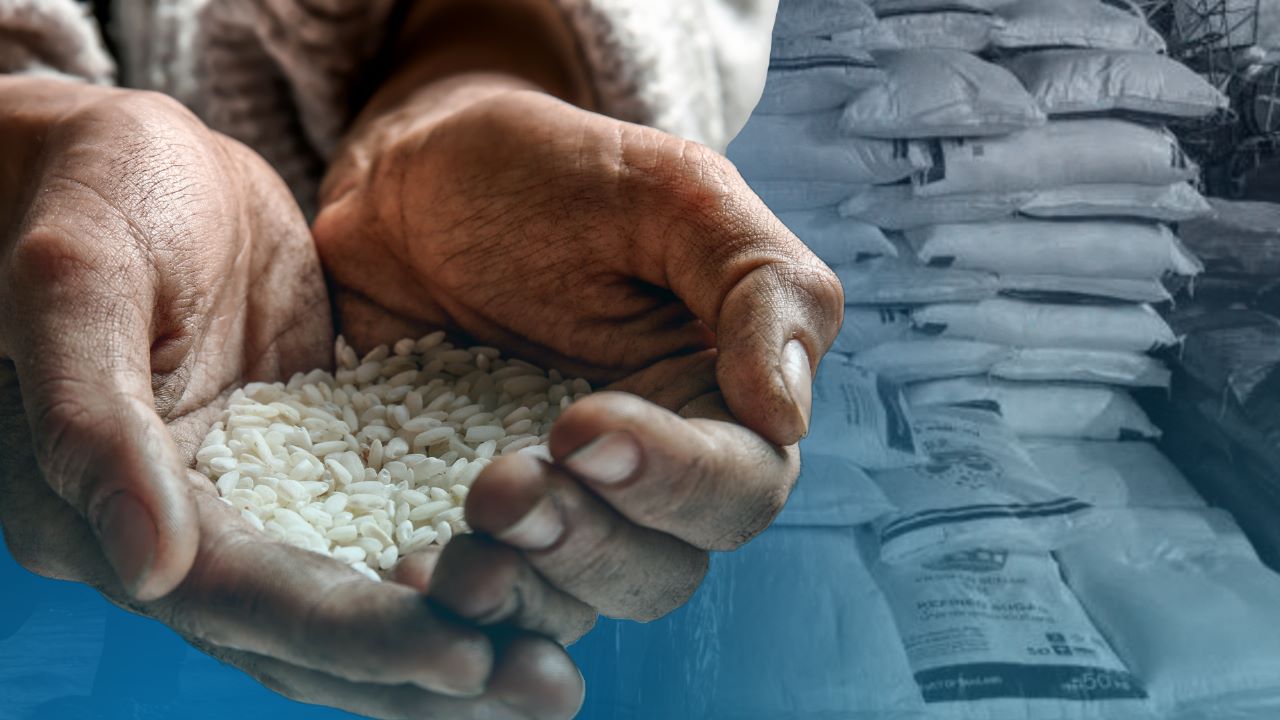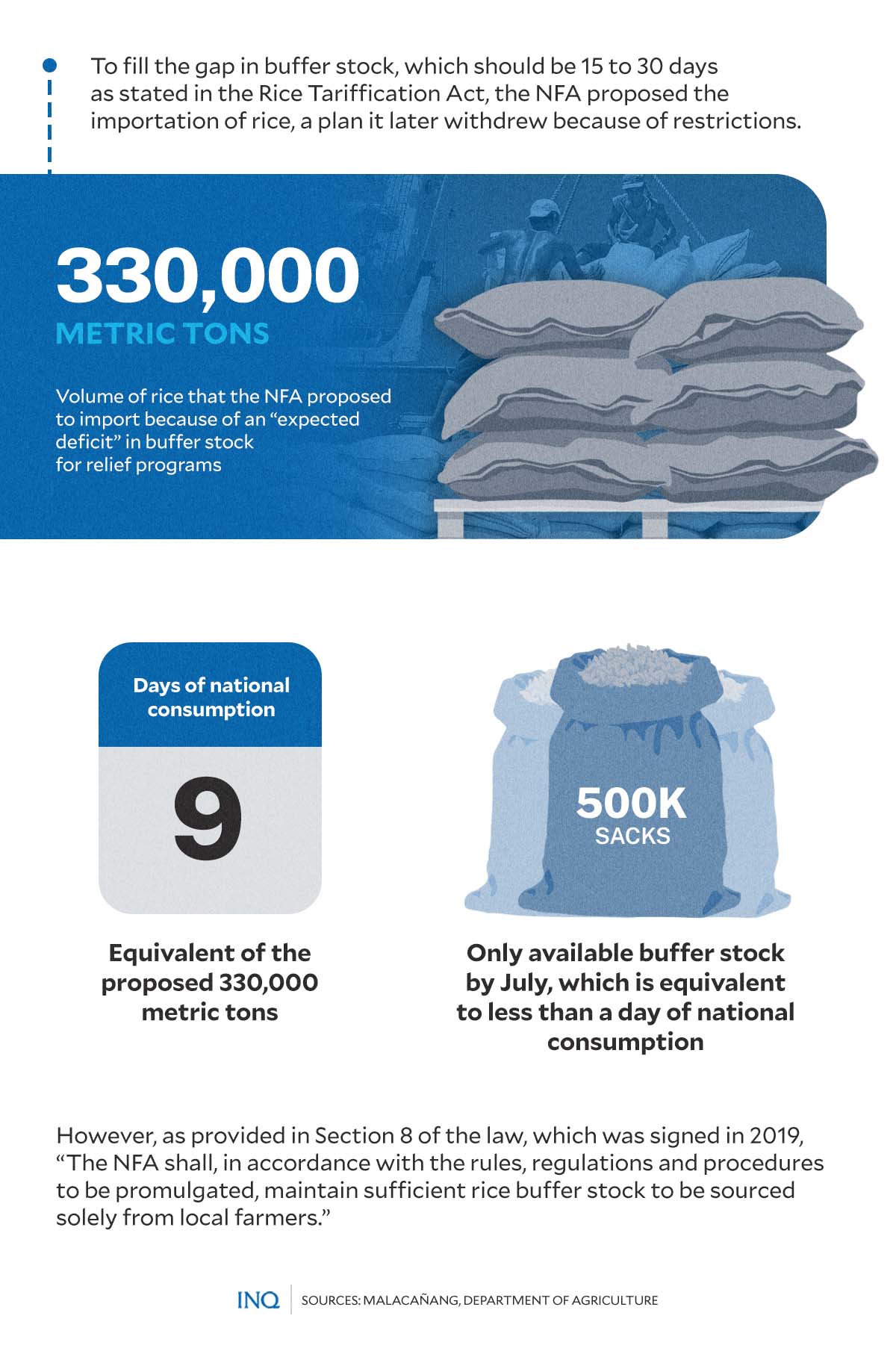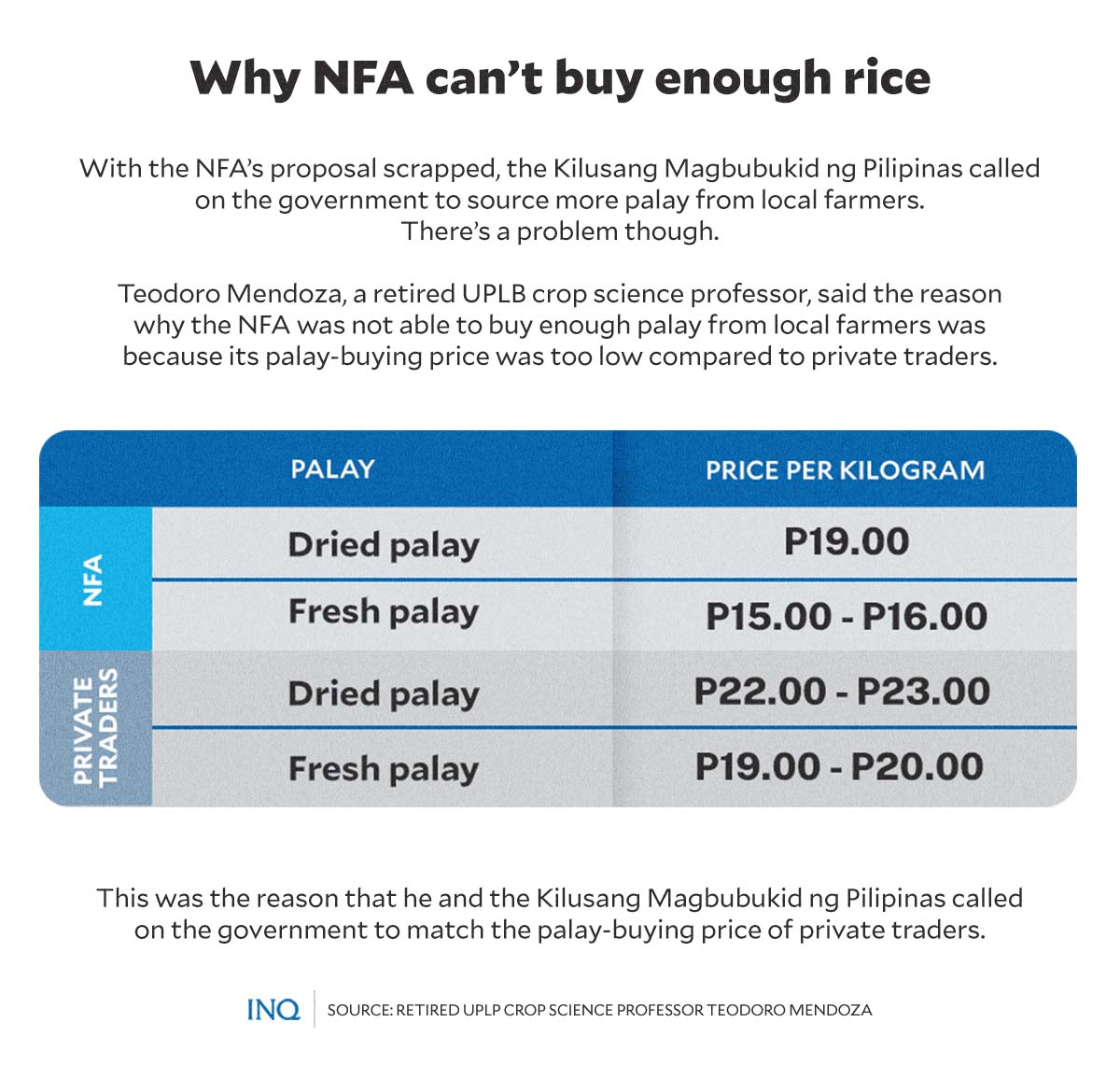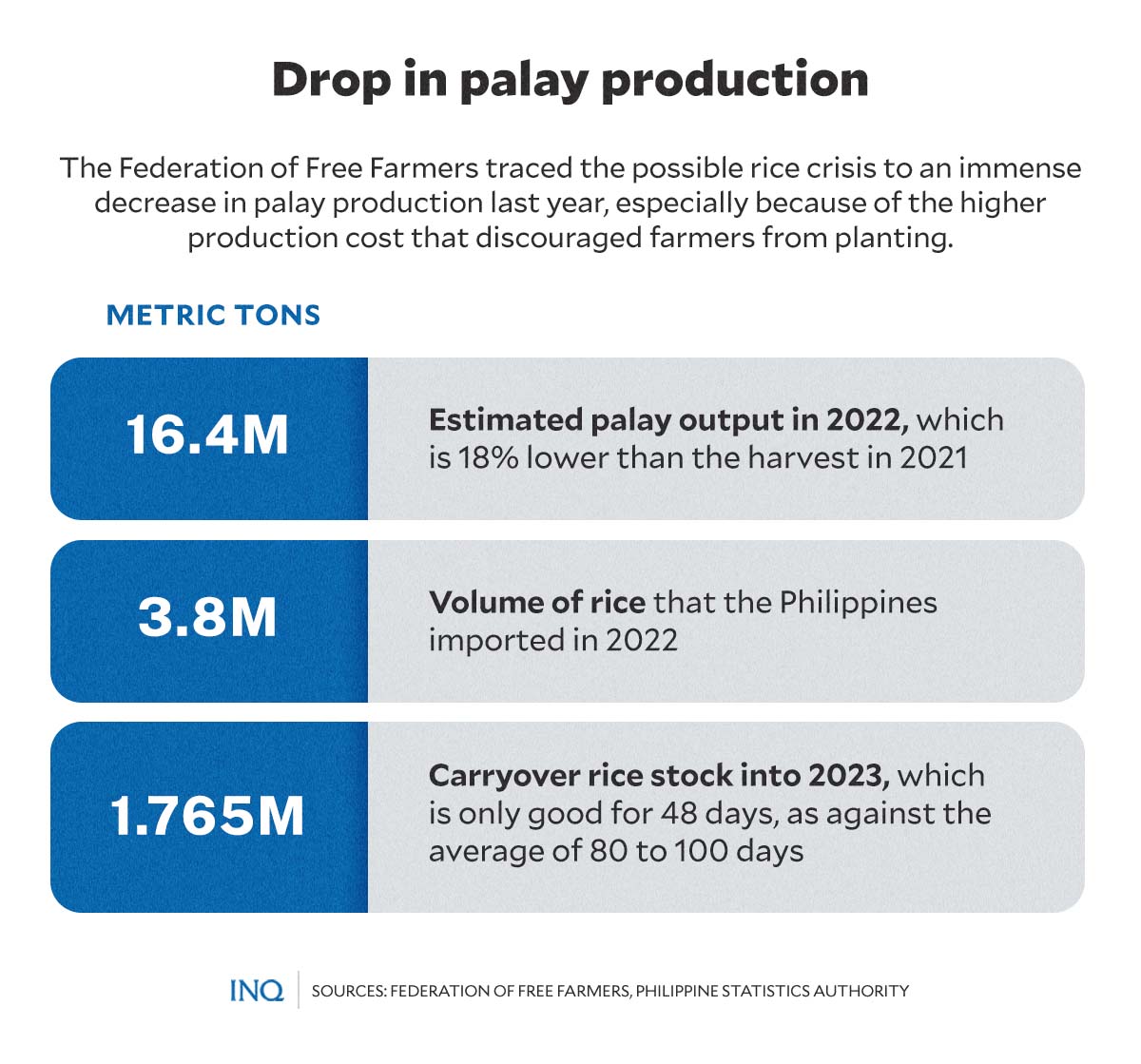Higher production costs, low gov’t buying price add to rice crisis specter
MANILA, Philippines—Because of the Rice Tariffication Act’s (RTA) provision that the National Food Authority (NFA) can only source rice from local farmers, the agency already scrapped its proposal to import 330,000 metric tons of rice.
Last week, Malacañang said the NFA suggested the importation of rice to cover an expected deficit in its buffer stock, or the optimal level that shall be maintained and used for relief programs.
However, the law, which was signed in 2019, provided in its Section 8 that the NFA shall, in adherence with the rules, regulations and procedures to be promulgated, “maintain rice buffer stock to be sourced solely from local farmers.”
READ: NFA’s proposal to import rice goes against its own mandate — farmer group
This was the reason that Agriculture Undersecretary Mercedita Sombilla said the NFA will no longer proceed with its plan and instead source the 330,000 MT from local farmers, stressing that “I think you (NFA) can really do that locally, you can.”
But there’s a problem.
Article continues after this advertisementAccording to retired University of the Philippines-Los Baños crop science professor Teodoro Mendoza, it’s “too late a hero,” saying that “harvesting is almost done [in most provinces].”
Article continues after this advertisement“What will they buy from local farmers and at what price?” he told INQUIRER.net, explaining that the dry season harvest in the Philippines takes place from mid-March to April, while the wet season harvest takes place from mid-September to November.
READ: NFA abandons planned rice importation
Expected deficit
As stated by Malacañang, the NFA proposed the importation of 330,000 MT of the grain, which is equivalent to nine days of national consumption starting July, to ensure sufficient stock for relief programs until December.
This, as given the NFA’s budgetary constraints, the agency expects its buffer stock to fall to less than 500,000 sacks by July, which is only equivalent to less than a day of national consumption.
READ: Marcos: Will boost NFA rice stock with local sources, imports
Even President Ferdinand Marcos Jr. stressed that “we will make plans whether to import, whether we need to extend, whether we need to increase the NFA buffer stock because it is already too low.”
“That is the only problem we see, the NFA buffer stock is low. The NFA needs to buy so the buffer stock would be enough for at least nine days,” said Marcos, who also heads the Department of Agriculture.
READ: NFA should increase rice buffer stock, Marcos says
Based on current regulations, the NFA is required to maintain a buffer stock equivalent to 15 to 30 days of national consumption. This buffer stock does not include rice in the hands of private distributors or households.
As Kilusang Magbubukid ng Pilipinas (KMP) chairman emeritus Rafael Mariano said, “importation for emergency buffer stocking is against the NFA’s mandate to solely purchase rice from local farmers.”
NFA not keeping up with private traders
But looking back, why did the NFA fail to buy enough supply from local farmers?
“When likened to a march, NFA is several steps away,” Mendoza said, stressing the gap between the NFA and private traders’ palay-buying price as the reason the agency was not able to purchase enough stock of the grain.
He said the NFA is buying a kilo of dry palay for P19, lower than private traders’ P22 to P23. For fresh palay, meanwhile, the NFA’s buying price is also lower at P15 to P16 a kilo, compared to private traders’ P19 to P20.
Mendoza stressed that there is really a need to increase the palay-buying price, especially since the production cost, including fuel, fertilizer, and labor, spiked because of inflation.
“What will happen to our farmers if palay-buying price remains at a standstill despite the higher production cost,” he said, adding that if NFA does not increase its palay-buying price, they will not be able to have enough stock.
KMP already called on the NFA to match the palay-buying price of private traders.
Rice crisis
But aside from the issue regarding the NFA’s proposal to import 330,000 MT of the grain, the Federation of Free Farmers (FFF) also warned of a rice crisis later this year.
It said “clearly, the proponents of RTA did not anticipate a situation like now, where both imports and local production are low and [the] government is stopped from importing rice.”
“We must also introduce additional safeguards to protect our farmers in the reverse situation, where farm gate prices are very depressed due to excessive imports,” the FFF stressed.
It traced the possible crisis to the huge drop in palay production in 2020 mainly because of high fertilizer costs, “which discouraged farmers from planting.”
Based on data from the Philippine Statistics Authority and import volumes recorded by the Bureau of Customs, the FFF estimated palay output in 2022 at only 16.4 million MT, which is 3.57 million MT or almost 18 percent lower than in 2021.
As stressed by Mendoza, low palay production can also be traced back to more rice lands being converted, then if not converted, he said some farmers already shifted from palay to other crops because of better harvest and buying price.
The FFF said: “Hence, despite the record high importation of over 3.84 million MT of rice in 2022, the carryover rice stock going into 2023 amounted to only 1.765 million MT. This is good for only 48 days, as against the usual average of 80 to 100 days.”
“The decline in carryover stocks has coincided with the increase in international prices of rice. As a result, imports during the first quarter of 2023 amounted to just 790,000 MT, compared to 927,000 MT in 2022.”
Based on its projections, an additional 1.2 million MT of imported rice may be needed to attain a 60-day national stock level before the onset of the July-September lean months.
To augment the NFA’s inventory, the FFF urged the government to raise its palay buying price or procure rice from farmers and their organizations through auction and similar means, instead of relying on imports.
But for Mendoza, it is also important for people to have an “adaptive consumption,” stressing that “it is high time that we should also look into our consumption.”
“Before, our consumption was only 90 kilos per capita, but now, as almost everyone has shifted to rice, the per capita consumption has increased. We should lessen our consumption by looking at other possible energy sources.”



